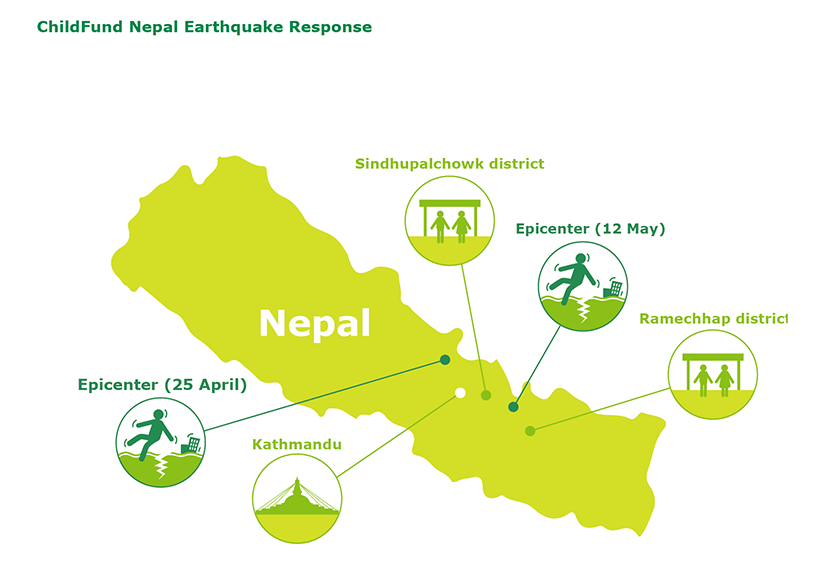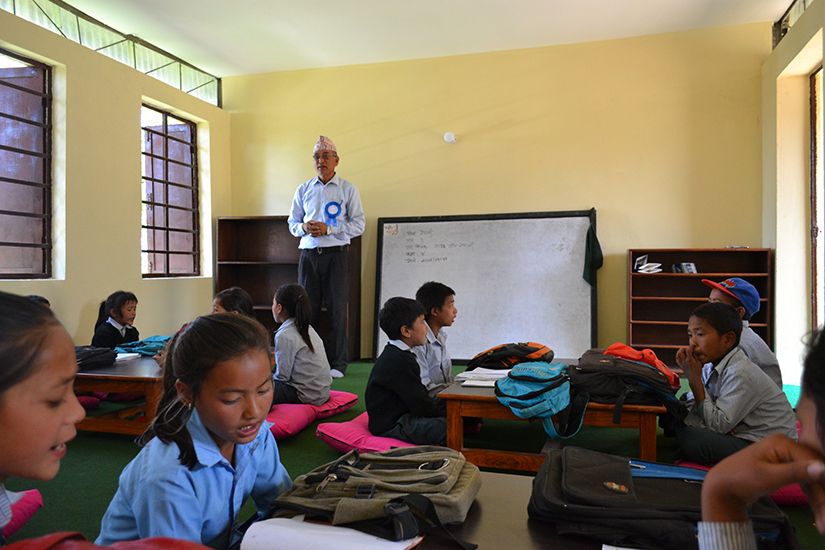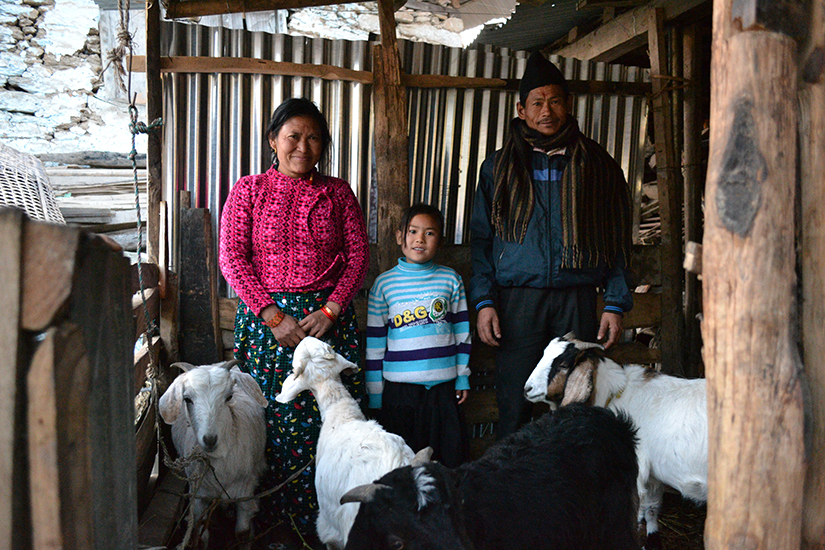On 25 April 2015, a powerful earthquake with a magnitude of 7.8 struck Nepal, with its epicenter 50 miles (80 km) north-west of the capital Kathmandu. A strong aftershock (magnitude 7.3) followed on 12 May, with its epicenter 47 miles north-east of Kathmandu.
Almost 9,000 people were killed, and 22,300 were injured. Of the 2.8 million people who were affected, 1.1 million (40%) were children.

ChildFund provides lifesaving food and shelter
Immediately after the earthquake, ChildFund staff were in the field to assess the damage and needs of the communities. Six days after the earthquake, our emergency response team started distributing food and temporary shelter materials in Sindhupalchowk District.
In May and June, ChildFund set up child-centered spaces (CCSs) to provide safe places for children to gather, play and receive trauma support. This intervention was crucial for child protection at a time when no schools had reopened and people were still living in temporary shelters.
 ChildFund set up child-centered spaces to provide safe places for children to gather, play and receive trauma support.
ChildFund set up child-centered spaces to provide safe places for children to gather, play and receive trauma support.
Getting schools back up and running
After people’s immediate needs had been met, ChildFund began working to normalize children’s lives. We built temporary learning spaces (TLSs) and repaired water and toilet facilities in schools. We provided educational materials for teachers and children to encourage children to go back to school. And as winter set in, we insulated classrooms and provided warm clothes for students.
We also led capacity-building sessions for teachers and community leaders on disaster risk reduction, education in emergencies, psychosocial counseling and child protection. We conducted an assessment with teachers and community leaders to review local child protection mechanisms and standards, and establish a monitoring and referral system.
 ChildFund renovated schools to be child friendly and earthquake resistant.
ChildFund renovated schools to be child friendly and earthquake resistant.
From relief to rehabilitation
After a year of emergency response activities, ChildFund switched to rehabilitation efforts. We worked with teachers and community leaders to renovate and reconstruct earthquake-resistant schools. For the lower grades, we built classrooms with carpets, low tables and cushions to make them more child friendly and culturally appropriate. In line with our “build back better” philosophy, we built the structures stronger than government standards to ensure safety in the event of future earthquakes. In all, we renovated classrooms for 1,863 students in 14 schools.
 We provided goats to 30 families as part of our income-generation program.
We provided goats to 30 families as part of our income-generation program.
Over the course of two and half years, we reached over 3,000 households with about 13,000 persons. We helped renovate 46 schools, with 5,337 students. All our work was done in partnership with three local NGOs, in close coordination with district disaster reduction committees. Community participation ensured orderly distribution and proper monitoring of construction, which added to our program accountability. At national level, ChildFund worked in coordination with the government and the UN for quality response and to avoid duplication of services.
ChildFund’s response was coordinated by ChildFund Japan.
ChildFund Japan
ChildFund Japan works to reduce the root causes of poverty and its impact on children so that they have a chance to develop their full potential, making positive changes for their future.
ChildFund Japan was established in 1952 as a recipient for ChildFund International (formerly Christian Children’s Fund) sponsorship funds in support of Japanese orphans following World War II.
Since 1975, ChildFund Japan has been working in the Philippines and Nepal to help deprived, excluded and vulnerable children, families and communities through meaningful, sustainable solutions. The essence of the sponsorship approach, which connects people one-to-one, is embedded in our organizational culture.